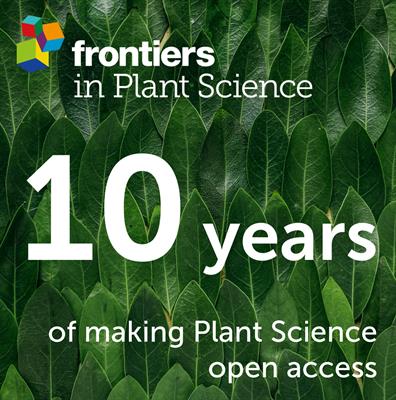Micro plastic driving changes in the soil microbes and lettuce growth under the influence of heavy metals contaminated soil
IF 4.1
2区 生物学
Q1 PLANT SCIENCES
引用次数: 0
Abstract
Microplastics (MPs) have garnered global attention as emerging contaminants due to their adaptability, durability, and robustness in various ecosystems. Still, studies concerning their combination with heavy metals (HMs), their interactions with soil biota, and how they affect soil physiochemical properties and terrestrial plant systems are limited. Our study was set to investigate the combined effect of HMs (cadmium, arsenic, copper, zinc and lead) contaminated soil of Tongling and different sizes (T1 = 106 µm, T2 = 50 µm, and T3 = 13 µm) of polystyrene microplastics on the soil physiochemical attributes, both bacterial and fungal diversity, compositions, AMF (arbuscular mycorrhizal fungi), plant pathogens in the soil, and their effect on重金属污染土壤下土壤微生物和生菜生长的微塑料驱动变化
微塑料(MPs)因其在各种生态系统中的适应性、耐久性和稳健性,已作为新兴污染物引起全球关注。然而,有关它们与重金属(HMs)的结合、它们与土壤生物群的相互作用以及它们如何影响土壤理化性质和陆生植物系统的研究仍然有限。我们的研究旨在通过温室实验,研究铜陵市受重金属(镉、砷、铜、锌和铅)污染的土壤与不同大小(T1 = 106 µm、T2 = 50 µm、T3 = 13 µm)的聚苯乙烯微塑料对土壤理化性质、细菌和真菌多样性、组成、AMF(丛枝菌根真菌)、土壤中植物病原体的综合影响,以及它们对莴苣的影响。结果表明,HMs 和聚苯乙烯微塑料(PS-MPs)的组合,尤其是较小的 PS-MPs(T3),对莴苣的生长、微生物和土壤的杀伤力更大。综合污染物的毒性直接降低了莴苣的生理生化属性,改变了莴苣的抗氧化活性和土壤健康。最后一点的 T3 导致细菌和真菌多样性显著增加。相比之下,根瘤菌层中细菌的总体多样性更高,而块状土壤中真菌的多样性更高。此外,MPs 的减少在减少 AMF 和增加细菌和真菌病原体方面发挥了重要作用,尤其是在根圈土壤中。研究发现,在对照处理中,较大的 MPs 与较小的 PS-MPs 相比,功能预测有显著差异。环境因素在微生物群落的改变中也发挥了重要作用。这项研究还表明,微生物种群的不同分布可以作为跟踪土壤环境健康状况的生态指标。总之,我们的研究结果表明,HMs 和较小颗粒 MPs 的组合对土壤生物区系和莴苣的杀伤力更大,同时也为进一步研究 PS-MPs 和 HMs 的生态风险提出了许多问题。
本文章由计算机程序翻译,如有差异,请以英文原文为准。
求助全文
约1分钟内获得全文
求助全文
来源期刊

Frontiers in Plant Science
PLANT SCIENCES-
CiteScore
7.30
自引率
14.30%
发文量
4844
审稿时长
14 weeks
期刊介绍:
In an ever changing world, plant science is of the utmost importance for securing the future well-being of humankind. Plants provide oxygen, food, feed, fibers, and building materials. In addition, they are a diverse source of industrial and pharmaceutical chemicals. Plants are centrally important to the health of ecosystems, and their understanding is critical for learning how to manage and maintain a sustainable biosphere. Plant science is extremely interdisciplinary, reaching from agricultural science to paleobotany, and molecular physiology to ecology. It uses the latest developments in computer science, optics, molecular biology and genomics to address challenges in model systems, agricultural crops, and ecosystems. Plant science research inquires into the form, function, development, diversity, reproduction, evolution and uses of both higher and lower plants and their interactions with other organisms throughout the biosphere. Frontiers in Plant Science welcomes outstanding contributions in any field of plant science from basic to applied research, from organismal to molecular studies, from single plant analysis to studies of populations and whole ecosystems, and from molecular to biophysical to computational approaches.
Frontiers in Plant Science publishes articles on the most outstanding discoveries across a wide research spectrum of Plant Science. The mission of Frontiers in Plant Science is to bring all relevant Plant Science areas together on a single platform.
 求助内容:
求助内容: 应助结果提醒方式:
应助结果提醒方式:


